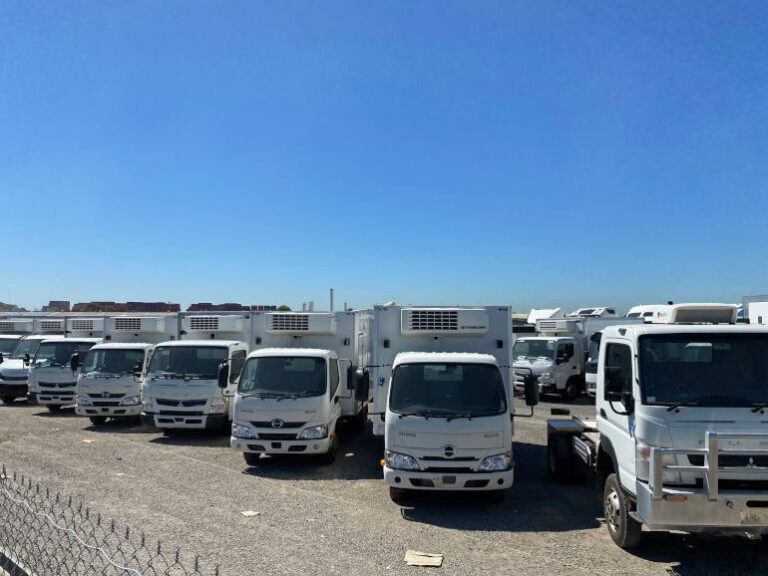Australia’s used truck market is seeing a sharp rise in distressed asset sales, with repossessions and insolvencies in the transport sector driving increased volumes through industrial auction houses like Manheim. Adrian Paley, Head of Sales – Industrial at Manheim, told Fleet News Group that the shift is a clear sign of where we are in the current economic cycle.
“We are seeing increased levels of distress, especially in the transport space,” said Paley. “The newer, later-model stock seems to be holding value, but there’s a definite downward shift in value of older long-haul equipment as companies are unable to sustain operations.”
The reason, according to Paley, is multi-layered but ultimately a symptom of post-COVID normalisation and overdue financial reckonings. “During COVID, we saw low enforcement of debt collections, showing compassion to businesses just trying to stay afloat. Now that the economy is more stable, large volumes of debt are being called in, and it’s triggering a wave of repossessions and insolvencies.”
While the insolvency data often highlights larger names, Paley noted that most of the distressed stock comes from small to medium operators that form the backbone of Australia’s transport industry. “You won’t see the large corporates talking about distress. But smaller operators, often family-run businesses, are under immense pressure,” he explained.
Manheim is seeing the impact first-hand, often working with financiers who repossess trucks and equipment. The assets are then liquidated quickly in high-traffic, event-style auctions designed to attract end users—not just dealers.
“When we run a distressed sale, we lean into it. We promote it as a distressed auction and tailor marketing to the relevant industry segment—like refrigerated transport if we’re offloading ex-major retailer or subcontractor trailer fleets,” Paley said. “These events draw hundreds of active bidders and generate strong competition. Buyers know there’s a good deal to be had and that the vehicles must be sold.”
Fleet Managers considering how to dispose of surplus vehicles should take note. While conventional wisdom might favour staggered disposal to avoid oversaturating the market, Paley believes high volumes of generic trucks—like tippers or medium rigids—can be absorbed if the market is deep enough.
“We’re often requested to drip-feed assets into the market, but when the product is liquid and the buyer base is broad, we’ve had great success running a large number through at once,” said Paley. “It’s only with very specialised assets or plant-specific vehicles where a more considered, staggered approach might be needed.”
Government and council fleets continue to be standout performers in the auction market. According to Paley, buyers place significant value on maintenance records and the high specifications of council assets. “The perception is that government-owned vehicles are better maintained, lightly used, and fitted with safety equipment—often to a higher spec than necessary,” he said.
That perceived quality drives stronger prices and helps Manheim run dedicated council and government auctions each month, where a wide range of transport and civil fleet equipment is offered to a receptive buyer base.
Paley also noted the contrast between small business operators and government fleet buyers when it comes to procurement decisions. “Smaller operators make purchasing decisions based on survival—they’ll make do with the minimum required to get the job done. But councils often overcapitalise, opting for specific brands or high-spec safety features to meet WHS compliance and internal preferences,” he said.
The upside is that those investments help resale. “When a mum and dad buyer picks up a second-hand council truck, they’re getting a high-spec vehicle that they don’t need to spend money upgrading,” said Paley.
While Paley acknowledges that supply chain pressures have eased and auction prices have normalised from their COVID-era peaks, the market remains active. “We’re still seeing strong bidder traffic, strong demand for late-model stock, and consistent volumes,” he said.
“Manheim is busy when the economy is booming and fleets are turning over voluntarily, and we’re busy when distress forces involuntary turnover. Right now, we’re moving toward the latter.”
For Fleet Managers, that means opportunities—both to purchase quality second-hand equipment and to be strategic when disposing of assets. Whether it’s liquidating surplus fleet or exploring acquisitions, understanding the motivations behind distressed sales can help buyers and sellers alike navigate the market more effectively.






